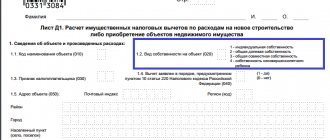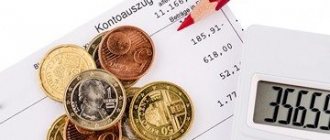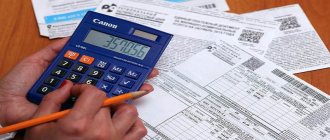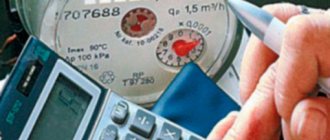How do you pay for gas without a meter?
How do you pay for gas without a meter?
Gas stove
So, if the apartment has a gas stove (but no gas water heater or gas heating), then it is assumed that each tenant spends 10 cubic meters of gas per month.
A family of three people - 30 cubic meters, of five people - 50 cubic meters. This calculation method is beneficial to the management company, but not to consumers. After all, you cook for the whole family at once, and not everyone for themselves. And small children do not use gas at all.
One cubic meter of gas in the second half of 2020 in Novosibirsk costs 5.835 rubles.
It turns out that each resident of an apartment with a gas stove pays 58 rubles 35 kopecks per month.
There are three Ivanovs in the family; gas costs them 30 × 5.835 = 175 rubles 5 kopecks per month. There are five Petrovs, for them gas costs 50 × 5.835 = 291 rubles 75 kopecks per month.
The Petrovs have a gas water heater. It is assumed that they spend 16.2×5 = 81 cubic meters of gas on heating water.
Therefore, they receive a monthly bill for 81 × 5.835 (dispenser) + 50 × 5.835 (stove) = 472.63 + 291.75 = 764 rubles 38 kopecks per month (of which 472 rubles 63 kopecks are for the gas consumed by the dispenser).
The house where the Ivanovs live has hot water supply, so they do not pay for gas heating of water. Otherwise, we would have spent 16.2×3×5.835 = 283 rubles 58 kopecks on this, and the total gas bill would have been 26.2×3×5.835 = 78.6×5.835 = 458 rubles 63 kopecks.
What happens for non-payment
The consumer is obliged to promptly pay for the resources used, which is provided for by the contract concluded with the supplier and the requirements of domestic legislation.
We recommend: How to remove the seal from a gas meter
The resulting debt can lead to the following negative consequences for the homeowner:
- Penalties – penalties for late payment. The longer the period of non-payment, the higher the penalty. Within 31 days or more from the required payment date, a penalty is charged in the amount of 1/300 of the rate of the Central Bank of the Russian Federation, which is 7.75 percent per annum. If more than three months have passed from the specified date, the penalty increases to 1/130 of the rate. A penalty is charged for each day of delay, as a result of which the amount of debt may increase significantly;
- Warning - before filing a lawsuit, the utility organization must warn the debtor in writing, demanding to pay the debt no later than 20 days from the date of the warning;
- Going to court - Gorgaz files a claim for the need to repay the debt. In addition to the debt and accrued penalties, the debtor will have to pay legal costs;
- Additional sanctions - a ban on crossing the border, confiscation of a driver's license, seizure of property to pay off a debt.
If the amount of debt is significant, unscrupulous payers may be subject to criminal prosecution.
How much gas do we actually use?
How much gas do we actually use?
Gas stove
Let's try to understand whether the standard is reasonable. How much gas do we spend on cooking?
If you turn on all four burners of an average stove to maximum, it will consume approximately one cubic meter of gas per hour. A large burner will burn 0.375 cubic meters, two medium ones - 0.25 each, a small one - 0.125.
The Ivanovs and Petrovs have ordinary stoves. The Petrovs also have a gas oven, while the Ivanovs have an electric oven. The oven consumes 0.4 cubic meters of gas per hour.
Ivanov, in order to use up his standard (30 cubic meters), you need to turn on each burner at full power for an hour every day (1 cubic meter x 30 days). In principle, this is possible, although for this you need to really love cooking.
Petrov, in order to spend 50 cubic meters, you need to turn on the stove in the same mode (30 cubic meters) plus use the oven 25 times a month for two hours (0.4 × 2 × 25 = 20 cubic meters). That is, fry, steam and bake almost non-stop.
Typically, a gas stove consumes from 5 to 40 cubic meters per month - depending on the size of the family, the model of the stove and the intensity of its use.
If you want to understand whether the meter is profitable for you, look at how many hours a day you use each burner, and how many hours the oven works, and calculate the gas consumption (see above). If it comes out to significantly less than 10 cubic meters per month (0.33 per day) per person, the meter will definitely come in handy.
The Ivanovs love to cook and the three of them spend 0.55 cubic meters of gas on weekdays, and 2 cubic meters on weekends. There are on average 9 weekends and 21 weekdays per month. The Ivanovs’ consumption is 9×2 + 21×0.55 = 18 + 11.55 = 29.55 cubic meters of gas per month.
With a meter, they will save 0.45 × 5.835 = 2.63 rubles per month. With such introductory costs, even the cheapest meter will not pay for itself.
The Petrovs, of whom there are five in the family, spend the same 0.55 cubic meters of gas every day, and on weekends they bake something in the oven for about three hours. They spend 30×0.55 + 9×0.4×3 = 16.5 + 10.8 = 27.3 cubic meters of gas. This is noticeably less than the standard.
Calculation of payment for gas provided in residential premises:
If you have a gas meter
The amount of payment for gas in an apartment or private house equipped with an individual natural gas meter is determined in paragraph 42 of the Rules for the provision of utility services. For this purpose, there is a special formula No. 1 given in the document:
Wherein:
- – this is the total amount of natural gas consumed during the billing period by the subscriber in a residential premises, determined in accordance with the readings of an individual meter,
- - this is the gas supply tariff established by the local government in accordance with the legislative norms of the Russian Federation.
The result is the cost of gas consumed, which the subscriber must pay.
An example of calculating fees for gas supply in residential/non-residential premises:
- The gas meter reading for the calendar month was 100 cubic meters
- The established tariff for gas supply services in the region for the population in apartment buildings was approved in the amount of 4.5 rubles per 1 cubic meter of gas consumed.
Total: 100 x 4.5 = 450 rubles
In the absence of a gas meter
The amount of payment for utility services for the use of natural gas for heating in an apartment or house that is not equipped with an individual gas meter is also carried out, in accordance with paragraph 42 of the rules for the provision of utility services, according to formula No. 5:
Wherein:
- – this is the total area of the apartment or house,
- - this is the standard gas consumption for heating residential premises,
- – this is the number of residents who permanently and temporarily reside in an apartment or house,
- – this is the standard gas consumption for cooking,
- - this is the standard gas consumption for heating water in the absence of a central hot water supply,
- – this is the gas tariff, which is established by the local government in accordance with the legislation of the Russian Federation.
From this formula it is clear that gas can be used both for cooking and for heating and hot water supply. If a function is not used, it can simply be removed from the formula. In apartment buildings, most often only the gas cooking function is used. Therefore, you need to calculate the cost of gas only based on the number of people living and the standards for gas stoves.
An example of calculating fees for gas supply in a residential area:
If the apartment is simply equipped with a gas stove, and is not equipped with a gas water heater and heating.
- The apartment accommodates 4 people
- The regional standard for natural gas consumption for cooking is 12.58 cubic meters. meters per person
- The regional tariff for natural gas is 4.5 rubles per 1 cubic meter. meter.
The amount of payment for gas supply for this apartment for one month will be: 4 * (4.5 * 12.58) = 226.44 rubles
General house gas needs are usually calculated based on the readings of the common house meter and are shown as a separate line on the receipt for utility bills and house maintenance. You can most often find out all the norms and tariffs, as well as use special calculators for calculations, on the websites of gas companies on the Internet.
How to install a meter?
How to install a meter?
Contact the gas service and write an application for installation. Take with you documents that confirm your ownership of the apartment, and a paid receipt for gas for the last month.
The gas service will tell you where and what type of device you can buy. It’s not worth taking any and anywhere - it may not suit you. When you buy a meter, go to the gas service again. They will calculate how much the installation costs. At the same time, they will set a date for the master to come.

Targeting options
You can find out gas debts at an address in the same way as in the case of a personal account in several ways:
- Visit in person the organization that is responsible for servicing your apartment or private building, in particular for gas supply;
- Obtain information through a bank branch;
- Check the data at the unified settlement center.
The listed methods imply personal appearance, in which you will definitely need to have a passport confirming the right to receive the requested information.
It will also not be superfluous to have payment documents with you, against which you can compare receipts. Only property owners and registered occupants have the right to receive information about debt. A personal visit is most relevant if any inconsistencies or questions arise, data reconciliation is required, in particular, when the payment receipts that arrived at the payer’s address have not been saved. On site, you can personally familiarize yourself with the most correct and complete information, receive the necessary statements and forms for payment. At the same time, you can find out the debt for gas here by last name, but you should not exclude namesakes; knowing the address and preferably your personal account will not be superfluous.
How else can you save money?
How else can you save money?
Gas stove
Place dishes (kettle, pots, pans) on a suitable size burner. If the burner is larger, you heat the air unnecessarily. If it is less, the bottom heats up unevenly. Cover the dishes with a lid - this reduces heat loss by about 20%.
Heat the contents of the cookware to the desired temperature as quickly as possible. But after boiling, it is better to reduce the gas - the fire should not lick the walls of the pan. Don't burn gas in vain - for example, don't let water boil away in a kettle.
It is best to use energy-efficient stainless steel cookware with a polished bottom and a copper or aluminum layer. True, it costs more than usual. And throw away dishes with a deformed bottom - they waste one and a half times more gas.
An electric kettle, a coffee maker instead of a cezve, a microwave, a multicooker - all these appliances save gas (although they increase electricity costs).
And please remember the safety rules. Do not use the stove for heating. Do not dry clothes over it.
It sounds ridiculous, but some people still do this. But it’s so close to trouble. Starting a fire this way is as easy as shelling pears.
Geyser
A dishwasher saves at least 20 liters of hot water per day. To heat 20 liters, the dispenser spends 0.135 cubic meters of gas. This will be 4.05 cubic meters per month. On them you will save 4.05 × 5.835 = 23 rubles 63 kopecks. It's a small thing, but nice.
If you have an old gas water heater with a constantly burning wick, it is better to replace it. The wick spends from 5 to 20 cubic meters of gas per month, that is, it wastes up to more than a hundred rubles.
Don’t forget about special devices for saving water - we talked about them in the last article.
The retail price (tariff) for gas is the price of gas sold to the population to satisfy personal needs. Retail prices (tariff) for natural gas are regulated by the state. Retail prices for natural gas are calculated and set in rubles, taking into account the price of value added tax per 1000 m³ or per 1 m³ of gas, adjusted to standard conditions.
If there are gas metering devices, the volume of supplied gas is determined based on the readings of the gas metering device (node). If subscribers (individuals) do not have gas meters, the volume of gas consumption is determined in accordance with gas consumption standards.
Heating water for household and sanitary needs (in the absence of centralized hot water supply)
using a gas stove
using a gas heater
Heating (in the absence of centralized heating)
Gas is used everywhere. This is the most developing industry and its product comes to our homes in the form of blue fuel used for domestic needs. It is much cheaper than other methods of heating a room, as well as cooking.
For economic reasons, many private houses are connected to gas communications whenever possible, but the final cost for citizens is influenced by the following indicators:
- the tariff at which a unit of gas is sold in a specific region;
- amount of resource consumed;
- Availability of discounts on gas payments.
Consumption standards are applied for premises where gas meters are not installed, and are regulated by Government Decree No. 373 of June 13, 2006. During the billing period, citizens can consume the resource within the standard or exceed it, but in this case the cost of a unit of gas increases significantly.
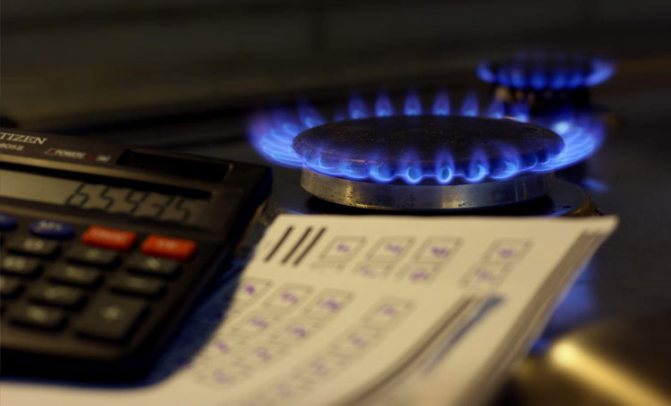
The established standards differ depending on the use of “blue fuel” separately for premises:
- with gas stoves, central heating and hot water supply;
- with gas stoves, gas water heaters in the absence of central hot water supply;
- with gas stoves and without hot water supply, as well as the absence of a gas water heater;
- heated by gas equipment.
The tariff consists of several factors, primarily:
- cost of extracted fuel;
- costs associated with transportation to the consumer;
- services for the sale of gas to the population.
The final cost of a cubic meter of gas is set by regional gas services.
Tariff increase program
In accordance with the norms and rules of Russian legislation, the increase in gas tariffs occurs in accordance with the letter of the law. Increases may occur every year depending on the inflation rate.
There is a rule for gas that allows the tariff to be increased no more than twice a year. The specific season and date of such an increase is determined by issuing a corresponding resolution by the Government of the Russian Federation.
Thus, payment for gas, as one of the utilities, occurs in accordance with the norms and rules established by both regional and federal legislation. Late payment or complete non-payment of money for the use of gas entails a lot of negative consequences, including shutdown.
Gas consumption metering
In most cases, it is quite profitable to install gas meters. Especially for those citizens who spend it only for cooking. But there are a number of requirements for metering devices that must be met:
- must comply with the regulations on the permissible type of use;
- installed by specialists and subject to sealing;
- has a service life, after which it must be checked or replaced.
The consumer's responsibilities also include recording monthly meter readings and paying for the amount of gas that was consumed. As a result, the amount to be paid is formed from the volume of the resource consumed, multiplied by the tariff applied to a specific consumer.

Every month, before the 10th day, the subscriber is obliged to transfer current meter readings to the Service Provider. For payment, the difference with previous readings is taken, and this value is the volume of gas consumed per month.
If the subscriber did not report or was late, then the average value is used for calculation. To do this, average readings for the past annual period are taken and divided by the appropriate number of months. This calculation method can only be applied for no more than three months in a row. Next, the amount according to the standard will be calculated.
There are also a number of conditions depending on the type of gas appliance:
- for meters installed inside a house or apartment, as well as outdoors, but equipped with a temperature compensation device, the difference between the current readings and the previous ones is taken;
- for meters placed outside and without a temperature compensation device, the resulting difference between the readings is multiplied by the temperature coefficient. In each region it is set monthly for the entire heating season.
For example, for the Kabardino-Balkarian Republic the temperature coefficient is:
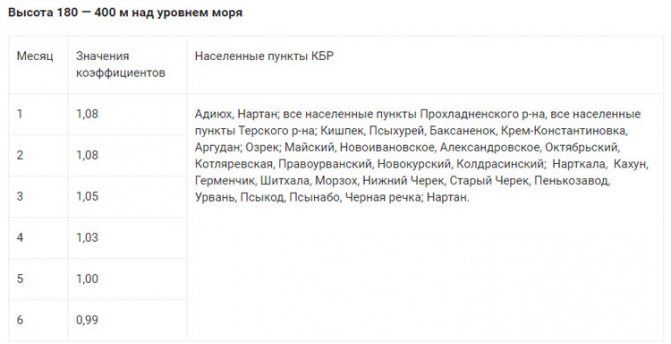
Gas consumption standards without a meter: new gas tariffs 2020
The gas industry in Russia is the most profitable and is developing rapidly. Gas is needed everywhere: huge industrial enterprises and small private houses, as heat and fuel energy, as well as for domestic needs. The heat provided by gas is an effective method of heating any room. This heating method is significantly ahead of its competitors, such as using electricity or coal.

There are a number of reasons that determine gas pricing for ordinary citizens:
- The territorial location of the region of the Russian Federation, that is, natural and other factors influencing the tariff;
- The exact amount of gas used for domestic or other needs;
- The time of year directly affects tariffs;
- Family category (beneficiaries or families who pay the full tariff).
There are certain standards established by law for gas consumption. If this indicator for a certain period is less than or equal to the norm, then pricing may be minimal, and gas consumption that exceeds the standard indicators will be calculated at a fairly high price.
Another important factor that affects the gas tariff is its purpose. The consumer can use gas to cook food and also to heat the living space. In the first case, the gas tariff and standards will be the same, and in the second case, completely different.
Taking into account all the above factors, it is obvious that the Russian Federation, with its vast expanses, climatic features and subtleties of legislation, the regions themselves set the price of gas.
The nature of Russia is rich in gas resources. But how can an ordinary citizen use it for everyday needs? From the depths of the earth, gas travels a rather long way to the end consumer through gas pipelines connected into a single network. Therefore, gas pricing includes the following features:
- Directly the cost of gas, there are differences between wholesale purchases and regulated (limited);
- Gas delivery costs;
- Sales services.
The Federal Tariff Service has established regulations for each item. The next hierarchical level is the regional gas services, which set the final cost for consumers.
The gas that end users consumed at home throughout the entire period must be calculated and paid for. The volume of gas consumed is measured in cubic meters. The consumer needs to record the indicators and provide them to regional gas suppliers. Also, for the calculation you need to know the tariff, which is different for each region.
For the purpose of monitoring the consumption of various utility resources, such as gas, there are household meters that record the direct amount of resource consumed.
Unfortunately, not all regions are equipped with such devices, especially since not every consumer independently monitors the consumption of gas and other resources. In this case, gas pricing will be based on consumption standards established by law. Such a figure will not be accurate, but only averages the indicators and gives an approximate value.
The rules in this case are extremely simple:
- Gas meters are strictly regulated. Only certain types can be used by the public.
- Installation of devices is carried out either by the management company or under the supervision of any regulatory body. A seal is placed on the devices. The device must also undergo periodic verification.
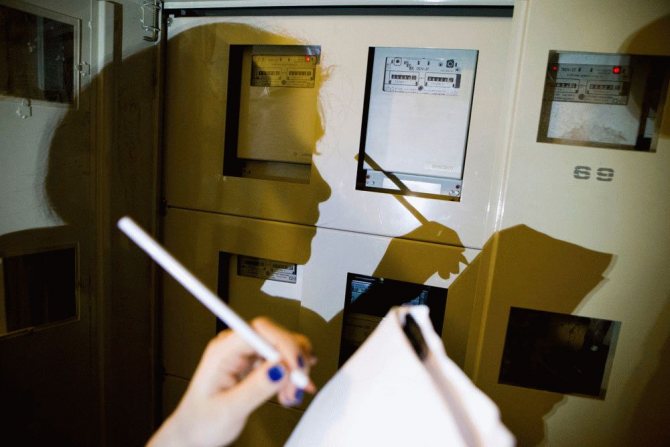
The end consumer is obliged to inform the supplier on a monthly basis about the volume of gas consumption. The consumer is also required to pay for gas use based on the readings recorded by the meter and apply existing tariffs.
To determine payment, the consumer must complete the following steps:
- record meter readings;
- calculate the volume of gas for the current period as the difference between the readings of this month and the previous one;
- We multiply the resulting value by the tariff and obtain the payment amount.
This case is the easiest to calculate.
But in practice there are some amendments:
- When using natural gas, there is a certain limit on its consumption. Accordingly, the tariff will also be different:
- the minimum gas price will be if its consumption is below standards;
- if the standard is exceeded, then the price will be higher.
It is logical that each value (up to and above the norm) will be multiplied by different prices. Next, the two quantities are added to form the total.
- Over the vast territory of the Russian Federation, there is also a coefficient that compensates for the excessive influence of temperature and pressure on the gas consumed. Therefore, this temperature coefficient must necessarily be included in the calculations.
- first of all, the volume of gas (in cube) must be multiplied by the temperature coefficient;
- Next, the resulting value must be multiplied by the established price.
Gas meters can automatically adjust the volume of gas to standard conditions. Such meters are called temperature compensated meters. They give clear indicators without errors, and there is no need to apply a temperature coefficient.
When the meter does not have a temperature compensation function, the coefficient must be applied.
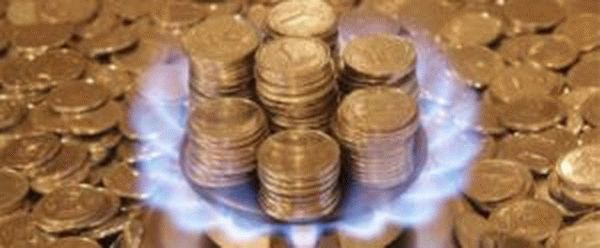
There are situations when gas meters are not installed at all, then the standards established by law will be applied for gas pricing. To approve standards, entire scientific methods are developed and applied.
Russian specialized organizations and institutes are engaged in such work. They provide reasonable standards for gas consumption in direct dependence on the area of the room (for heating) or a standard for 1 person living in a given living space for a certain period.
This is interesting: The seal on the water meter is broken: what to do and where to go 2020
When heating residential and non-residential premises, the price of gas is measured in cubic meters per 1 m2 of area and accordingly depends on the following factors:
- From the installed type of gas equipment.
- From the age of an apartment or private building, its maintenance and repair.
If household gas is used only for heating food or water, then the standard will be calculated per 1 person for a specified period and measured in cubic meters.
The first half of 2020 will pass without changes in tariffs, but from July the price may increase by 7%. This information is correct for the cost of gas with and without meters.
The table below shows tariffs for the first half of 2020 for Moscow for both cases:
Tariffs for gas consumption, as well as for other types of utilities, are determined by acts of regional authorities. However, methods for determining specific tariffs are regulated by federal legislation. Thus, the tariffing of utility services is based on two-level legislative regulation, which makes it possible to implement both federal and local programs.
Gas tariffs for the population are determined by regional authorities. As a rule, they are set in rubles for each cubic meter of blue fuel consumed. However, problems arise with calculating the volume of use, since not all consumers have metering equipment.
Regional authorities set one tariff, but calculations are made in different ways:
- those who have installed gas metering equipment pay only for the cubic meters used and recorded;
- those who do not have such equipment installed pay for gas consumption according to the standard established per person.
For example, in the city of Moscow the tariff is 6.74 rubles per cubic meter of gas. The standard for gas consumption per person is also set at about 5-6 cubic meters per month. So, if the apartment does not have a meter, residents will pay in accordance with the number of people living in the apartment.
In addition, consumption standards may vary depending on the purpose of fuel use. So:
- if consumption occurs solely for cooking, then payment will be made according to the number of persons registered in the apartment;
- if residents use blue fuel to heat the premises, then the calculation will be made based on the total area of the premises.
In addition, local authorities may set different tariffs depending on the device that uses a lot or little gas:
Thus, residents can, in agreement with utility organizations in accordance with local legislation, choose one or another type of tariff for the volume of fuel consumed.
Do not forget that gas transportation costs are also included in the tariff price.
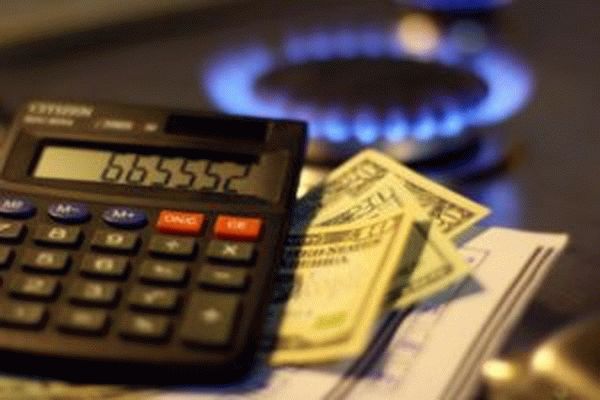
- for a gas stove - 11.2 cubic meters per person;
- for a stove and water heating system – 25 cubic meters per person;
- stoves without a heating system - 15.9 cubic meters per person;
- heating of the room - 8 cubic meters per square meter of room.
If the household uses gas exclusively for cooking and heating purposes, then the standards will be as follows:
- 11.8 cubic meters per person for cooking;
- 14.8 cubic meters per square meter of housing for heating.
In addition to such standards, the use of gas for the maintenance of livestock is also included. For example, for one head of pig on a farm there are 21.8 cubic meters of gas per month.
Thus, when paying for gas without a meter, the amount of payments depends on the following factors:
- size of premises;
- number of residents;
- number and types of animals on the farm;
- degree of housing arrangement;
- factors influencing gas consumption on the farm.
For this reason, it is not recommended to pay according to the standard cost, since in this case payment is made regardless of the actual amount of blue fuel consumed.
Of course, it is often more profitable to pay by meter, since in this case many factors that are taken into account when calculating the amount of fuel used are eliminated.
So, what are the prices for gas for the population ? When paying by meter, local authorities set a specific separate tariff. Thus, in the city of Moscow in 2020, for one cubic meter of gas consumed according to the meter, residents have to pay 6.74 rubles when using a regular gas stove for cooking dishes and heating water.
Depending on the type of gas used in the apartment, Moscow residents pay:
- 6.74 rubles is the price per cubic meter of natural gas for a gas heater in an apartment (for comparison: in St. Petersburg the same figure will be 6.27983 rubles).
- 4,593 rubles for heating using gas.
This is interesting: Automatic traffic jams for the meter: types and dismantling 2020
However, some types of expenses for which maximum tariffs are established do not apply to Moscow residents.
For example, residents of the Novomoskovsk region, in case of heating non-residential premises separately from the general heating system, must pay 6.7 rubles per cubic meter of gas.
Thus, it is quite difficult for citizens to calculate tariffs for the consumption of a service such as gas. So, to make your task easier, you need to install meters. Otherwise, it will be very difficult to keep track of what is included in the gas payment without a monthly meter.
What other information would you like to see in the article? Please write in the comments!
Gas is used everywhere. This is the most developing industry and its product comes to our homes in the form of blue fuel used for domestic needs. It is much cheaper than other methods of heating a room, as well as cooking.
For economic reasons, many private houses are connected to gas communications whenever possible, but the final cost for citizens is influenced by the following indicators:
- the tariff at which a unit of gas is sold in a specific region;
- amount of resource consumed;
- Availability of discounts on gas payments.
Consumption standards are applied for premises where gas meters are not installed, and are regulated by Government Decree No. 373 of June 13, 2006. During the billing period, citizens can consume the resource within the standard or exceed it, but in this case the cost of a unit of gas increases significantly.
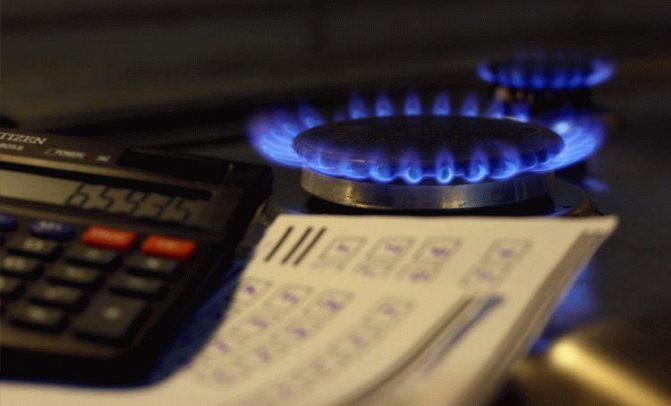
The established standards differ depending on the use of “blue fuel” separately for premises:
- with gas stoves, central heating and hot water supply;
- with gas stoves, gas water heaters in the absence of central hot water supply;
- with gas stoves and without hot water supply, as well as the absence of a gas water heater;
- heated by gas equipment.
The tariff consists of several factors, primarily:
- cost of extracted fuel;
- costs associated with transportation to the consumer;
- services for the sale of gas to the population.
The final cost of a cubic meter of gas is set by regional gas services.
In most cases, it is quite profitable to install gas meters. Especially for those citizens who spend it only for cooking. But there are a number of requirements for metering devices that must be met:
- must comply with the regulations on the permissible type of use;
- installed by specialists and subject to sealing;
- has a service life, after which it must be checked or replaced.
The consumer's responsibilities also include recording monthly meter readings and paying for the amount of gas that was consumed. As a result, the amount to be paid is formed from the volume of the resource consumed, multiplied by the tariff applied to a specific consumer.

Every month, before the 10th day, the subscriber is obliged to transfer current meter readings to the Service Provider. For payment, the difference with previous readings is taken, and this value is the volume of gas consumed per month.
If the subscriber did not report or was late, then the average value is used for calculation. To do this, average readings for the past annual period are taken and divided by the appropriate number of months. This calculation method can only be applied for no more than three months in a row. Next, the amount according to the standard will be calculated.
There are also a number of conditions depending on the type of gas appliance:
- for meters installed inside a house or apartment, as well as outdoors, but equipped with a temperature compensation device, the difference between the current readings and the previous ones is taken;
- for meters placed outside and without a temperature compensation device, the resulting difference between the readings is multiplied by the temperature coefficient. In each region it is set monthly for the entire heating season.
For example, for the Kabardino-Balkarian Republic the temperature coefficient is:
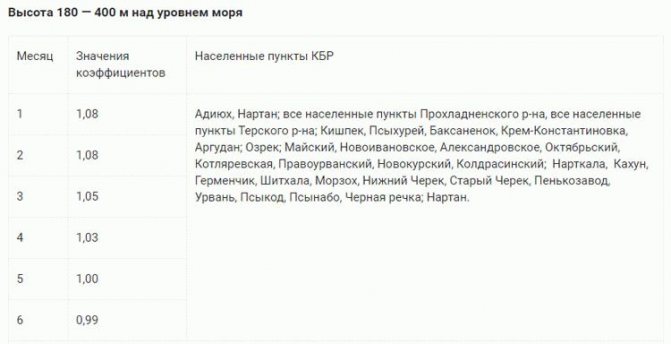
Gas can be used in everyday life in three ways and, depending on its purpose, the following units of measurement are used:
- for cooking and heating water - for each person registered in the premises (cubic meters/person);
- for heating a living space during the heating season (from October to April) - per 1 square meter of total area (cub.m/sq.m).
The appendix to Government Decree No. 373 dated June 13, 2006 specifies the minimum permissible gas consumption standards for the population whose residential premises do not have metering devices installed.
Let us present the standard indicators by region using one example as of January 1, 2020. You can find out more about everything by downloading the document file.
Today, the standard for natural gas without a meter and with a meter takes into account cooking and heating water using a gas stove. If you have central heating and central hot water supply, the following:
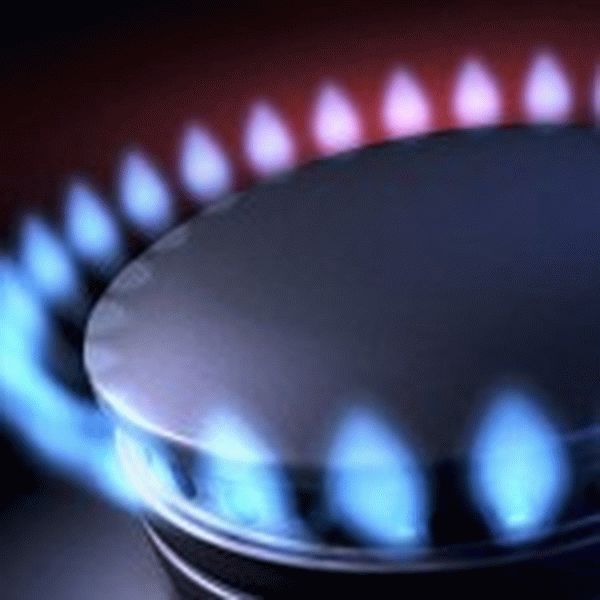
The last update of gas tariffs in Moscow was carried out on July 1 of this year. Let us remind you that the price of gas is determined by the regional tariff committee. According to the decree, gas tariffs and standards cannot be increased more than twice annually. Based on the above, for residents of houses heated with gas, the following standards and prices for the consumption of this fuel have been established:
- 4700 rub. per 1000 cubic meters of gas, provided that the heated area does not exceed the established standards;
- 5600 rub. per 1000 cubic meters of fuel, if the heated area of the premises exceeds the established standards;
- 5800 rub. for 1000 cubic meters if the heated room is non-residential.
This is interesting: Electricity meter readings: how to take readings correctly. 2020
What is the norm of square meters per tenant? If we talk about the standards for the area of a house or apartment per citizen, they are 33 square meters. Further, the more people live in the premises, the lower the square footage per inhabitant. If two people live in a house or apartment, then for each of the residents the norm is reduced and should not exceed 21 square meters. m. But if three or more people live in a residential building, then the norm is further reduced to 18 square meters. m for each of the residents. There are benefits for pensioners. For example, for a single pensioner the standard square footage is 42 square meters.
Citizens living in private houses in the capital and its region risk paying increased prices for gas. This is due to the fact that such residential premises are considered to be above standard. Therefore, it will be more profitable for owners of private houses to install a meter, and other tariffs have been established for such people. For example, if you use a gas stove, the consumption rate will be 6.04 rubles per cubic meter.
If the house is not equipped with a centralized hot water supply system, then you will also pay 6.04 rubles per cubic meter of fuel when using a gas water heater. If not only a gas stove and a gas water heater are used, but also the entire house is heated with gas, then the consumption rate for residents will be 4,334 rubles. per 1000 cubic meters of fuel.
From the above, it becomes clear that gas prices have risen by 300 rubles since the last tariff change. Let us recall that back in 2014, the Ministry of Economic Development reported that consumption tariffs would rise by only 2.4%. However, the increase in gas prices in the capital shows slightly different, inflated results.
It is also worth noting that the increase in tariffs does not exceed the permissible limits, and there are no sharp jumps in prices. But tariffs continue to rise steadily. Muscovites complain that the gradual increase in tariffs for blue fuel must be balanced with the growth in household incomes.
The Russian government has developed a scheme according to which tariffs for all housing and communal services, including gas, will increase over the course of 3 years. By 2020, bottled gas supply will increase by 4.1%. The cost of gas consumption through steam distributors will increase by 5%. But the most expensive tariffs will not be in the capital, but in the north of the country. This, of course, is associated with the cost of delivering fuel to the northern regions. According to forecasts, the next increase in gas tariffs should be expected at the end of this year or at the beginning of next. Oddly enough, gas prices for the population are growing faster than for enterprises. Today, one of the important tasks of the Russian government is to compare gas prices for these two categories. The authorities expect the following increase in gas prices:
- for housing, tariffs will increase by 8.5%, which is 1% more than the established indexation;
- for enterprises, tariffs will increase by 7.5%, which is an indicator of general indexation.
Practice shows that price changes do not affect the solution to the problem of non-payment. Many, as before, do not make timely payments for housing and communal services, including gas. Experts report that this is not due to an increase in tariffs, and even a decrease in prices will not affect the percentage of non-payment. In some regions, a culture of non-payment has developed. And the means that the state is introducing to stimulate payment for housing and communal services do not bring results.
We remind you that for the supply of quality gas, residents must pay monthly. There are fines for non-payment of housing and communal services, including gas. This year they have been increased by 2 times, and the penalty accrued to debtors on the unpaid amount per year is currently 17.7%. Interest accrues after three months of non-payment. Do not accumulate debts and pay gas services on time.
»
Counters
Accreditation for verification of water meters 2020
Read more
Counters
Antimagnetic seal for the electric meter 2020
Read more
Counters
Introductory machine before or after the counter 2020
Read more
Counters
Gas meter SGMN 1 G6 - technical characteristics and advantages 2020
Read more
Counters
Sealing an electricity meter: features, tasks, process 2020
Read more
Great article 0
Accounting for gas consumption without using meters
Gas can be used in everyday life in three ways and, depending on its purpose, the following units of measurement are used:
- for cooking and heating water - for each person registered in the premises (cubic meters/person);
- for heating a living space during the heating season (from October to April) - per 1 square meter of total area (cub.m/sq.m).
The appendix to Government Decree No. 373 dated June 13, 2006 specifies the minimum permissible gas consumption standards for the population whose residential premises do not have metering devices installed.
Gas consumption standards per person without a meter by region
Let us present the standard indicators by region using the example of consumption of 1 cubic meter per person from July 1, 2020. You can learn more about each by downloading the document file.
Today, the standard for natural gas without a meter, taking into account cooking and heating water using a gas stove in the presence of central heating and central hot water supply, is as follows:
| Gas tariffs in Rostov and the Rostov region. Valid from July 1, 2020 | ||||
| The tariffs (prices) below for gas in Rostov and the Rostov region are valid from July 1, 2020 to December 31, 2019. | ||||
| What are the tariffs for natural gas? | ||||
| Tariffs for natural (mainline) gas in Rostov and the Rostov region from July 1, 2020 | ||||
| Areas of gas use by the population | Units | Retail price for gas (including VAT) | ||
| Cooking and heating water using a gas stove (in the absence of other uses of gas) | rub./1 cubic meter m, reduced to standard conditions | |||
| Heating water using a gas water heater in the absence of a central hot water supply (in the absence of other uses of gas) | rub./1 cubic meter m, reduced to standard conditions | |||
| Cooking and heating water using a gas stove and heating water using a gas water heater in the absence of a central hot water supply (in the absence of other uses of gas) | rub./1 cubic meter m, reduced to standard conditions | |||
| Heating or heating with the simultaneous use of gas for other purposes (except for heating and (or) generation of electrical energy using boiler houses of all types and (or) other equipment that are in common shared ownership of the owners of premises in apartment buildings) | rub./1000 cubic meters m, reduced to standard conditions | |||
| Heating and (or) generation of electrical energy using boiler houses of all types and (or) other equipment that are in common shared ownership of the owners of premises in apartment buildings | rub./1000 cubic meters m, reduced to standard conditions | |||
| Natural gas consumption standards for the population of the Rostov region | ||||
| Directions for gas use | Standard consumption of utility services for gas supply in residential premises | |||
| Cooking using gas stoves | 13 cu. m/person | |||
| 8 cu. m/person | ||||
| 16.52 cu. m/person | ||||
Payment according to standard or by meter?
Utilities are subject to calculation according to the norms and rules provided by law. There are two options for determining gas consumption by the population:
Both methods have both their pros and cons. Depending on how many cubic meters are consumed, one method or another is chosen.
As a rule, for a residential premises it is more prudent to choose the method of calculating gas consumption using a meter. In this situation, if there is a pump that consumes quite a lot of gas, it is better to choose the payment method according to tariffs.
How to fill out a receipt for a gas meter (sample)?
Attention: The receipt is divided into two identical halves, which must be filled out in the same way, as they say, “as a carbon copy.” First, fill out your personal account, then your full name and address of the place where the gas meter is installed. Important Below we indicate for what period in months you pay for gas; it is best to write the previous month, even if you pay for the last two or more, so as not to incur a penalty. Next, fill out a table with meter readings and calculations: The first column is the readings that are currently on the meter (current readings) The second column is the readings that were in the last payment period (previous readings) The third column is the difference between the first column and the second (the volume of gas consumed ) The fourth column is the tariff on the day of payment (the price of one cubic meter of gas) The fifth column is the product of the third and fourth columns (the amount to be paid) If you have standards, then fill out the line below.



